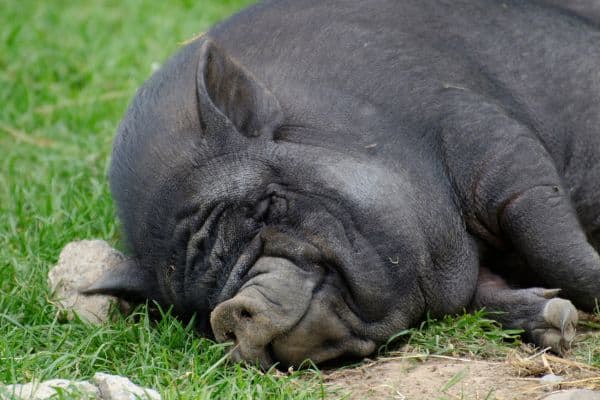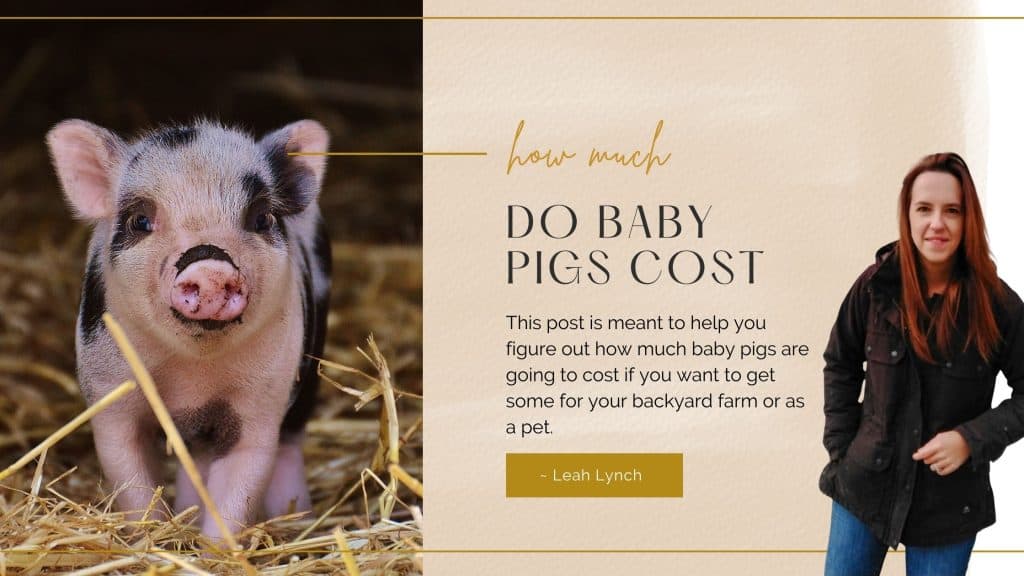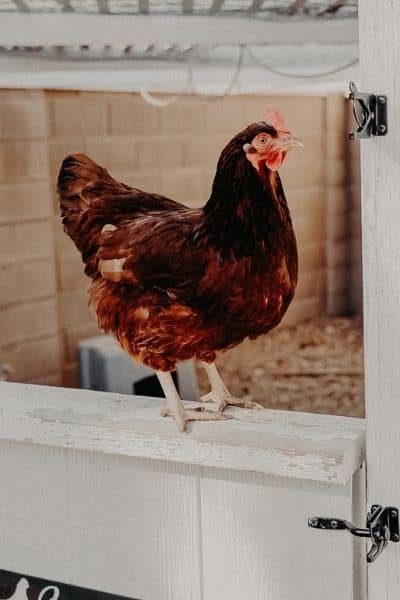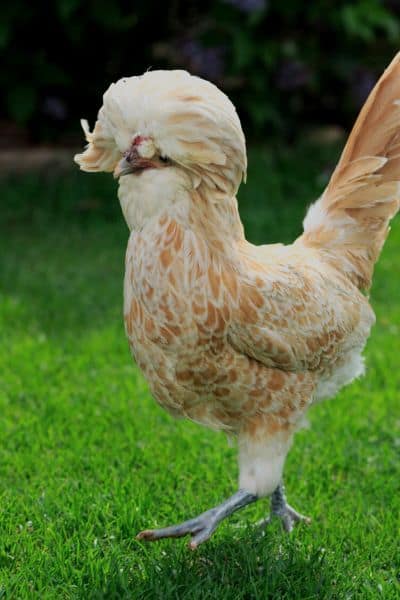How Much Do Baby Pigs Cost Both For Pets And Market Hogs
The answer to the question how much do baby pigs cost is not a straight answer. It depends on a lot. What you want the pig for, what breed it is, how to plan to raise it, and a few other factors.
I am going to cover how much you can expect to pay as a range for both pigs as pets and feeder pigs which grow into massive animals that are typically what you see at farms or what kids will use for 4-H and fair projects.
But I also want to give you the steps you need to research on how much baby pigs cost for your area as well.
Different Types Of Pigs
One important thing to remember is that no matter the size you are looking at, even a pet mini pig is still a pig. They might seem like good pets but they are still farm animals. They are going to have habits that you might find annoying like rooting which is them digging up the dirt with their snout. They are naturally smelly and messy animals. It’s just what pigs do.
Of course like anything you can find as cheap or as expensive as you want. Like any animal, you are going to get the best deal if you learn about them and know what you are looking at to tell if what you are buying is worth the asking price.

Micro Pigs – $350-$3000
Micro pigs, also known as teacup pigs or miniature pigs, are small-sized pigs that have become a trendy choice for pet owners. Despite their name, it’s important to note that micropigs are not so micro and can still grow to be pretty big.
Height: 15″-20″ at the withers.
Wieght: 50-150 pounds.
This might seem broad but the one thing you have to remember is that this is what some people might call a designer pig. They are not an actual breed so there is no standard of perfection like there is for ACTUAL pig breeds. So you won’t get quite as close of a weight range as you would with a true pig breed.
The cost of micropigs can vary A LOT depending on different factors such as the breeder, location, pedigree, and pig’s characteristics. On average, micro pigs can range from $350 to $3,000 or even more.
However, it’s crucial to do thorough research to ensure you are buying from a reputable breeder who practices ethical and responsible breeding. While it might seem harsh to say ” I won’t use this animal because of x” that is a good thing. Because that means the breeder is not breeding only for cuteness and is willing to cull (remove from the herd) an animal that does not measure up.
Pot-bellied Pig – $300-$1000
Potbellied pigs typically have a round bellies and are known for their friendly and sociable nature.
The cost of pot belly pigs can range from $300 to $1000, depending on factors such as age, color, and whether they are purebred or mixed breed.
It’s important to note that pot belly pigs, like any other pigs, require adequate space, proper nutrition, and social interaction to be healthy. I’ll cover some of those cost estimates in a bit.

Pigs for Farming and Meat Production
Pigs used for farming and meat production, such as heritage breeds or commercial hybrids, serve a different purpose than pet pigs. While they are often much cheaper farm pigs are massive animals weighing on average 250 pounds to as much as 400 pounds live weight. The prices of these pigs are primarily influenced by factors like breed, weight, age, and market demand.
Farming pigs are typically sold based on the weight they will reach at maturity.
The cost can range from $50 to $200 or more per piglet, depending on the breed and market conditions.
If you are considering becoming a pig farmer in mind that raising pigs for meat production requires substantial space, specialized care, and knowledge of best farming practices. If you are buying a hog for a 4-H market hog project make sure to check the guidelines for your fair. There are such things as weigh-ins and vet checks that have to be done and can depend on the county.
How To Research The Price Of Pigs In Your Area
There are a few places you should check out before deciding on what your local price is likely to be. I want you to use these factors to help you in your research.
Search Google (pig breed for sale + your local area) if that doesn’t get you enough results then broaden it to your state.
Once you find some search results. Take note of the time of year they are selling them. Springtime is often when you will see higher prices.
Pay attention to how they are marketing them. Are they hyping up the cuteness and pet factor? Then you might be paying a higher price than you need to if you just found a breeder that is asking a fair price.
Do this same thing on craigslist and on Facebook to see if you can find a Facebook page that might give you a lead on a decent breeder. If the page as not been posted to in a few years then it’s probably not a good option but some animal breeders don’t post in their off-seasons so if it has been 12 months or less since the most recent post then its still worth reaching out to the page to see if they have any pigs for sale.

Additional Costs to Consider
When calculating the overall cost of owning baby pigs, it you need to think about the additional expenses that come with pig ownership. These may include:
Housing and Enclosures
Pigs require secure and spacious (enough) enclosures or pig pens. The cost of constructing or purchasing these structures can vary based on size, materials used, and additional features like fencing or shelters. Depending on the size of the pig a dog house and pen made out of dog kennel panels can work for smaller pigs.
Feeding and Healthcare – $25-$50
Pigs have specific dietary needs, and their nutrition should be appropriately managed. Costs may include pig feed, supplements, and occasional veterinary care.
Pig Accessories – $40-$300
Essential supplies such as water troughs($20-$150), feeders ($20-$150), bedding materials ($10 a month), a pool to keep them cool in the summer ($10 A Year), and maybe some other things to keep them entertained if there is not as much space for them to dig and root around.
pig feeders
Licensing and Permits
Some areas (especially cities) may require permits or licenses for pig ownership. Research your local regulations to determine if any additional costs or requirements apply.
Health Certificate – $70-$200
If you are going to fly the pig to you from the breeder they require one or some pet trams ports require one from the vet as well.
Free Farm Goal Planner!!!
➡️Get my proven system for choosing your farm goals so you don’t get burnt out.
Raising Pigs On a Farm
When considering raising pigs on a farm, it’s important to understand the various expenses involved. Here’s an itemized list of costs commonly associated with pig farming:
Housing and Infrastructure:
Pig Pens or Shelters: The cost of constructing or purchasing pig pens or shelters depends on the size, materials used, and any additional features like fencing. This cost can vary significantly, ranging from a few hundred dollars to several thousand dollars, depending on the scale of the operation and the materials chosen. You also have to remember that there is a ventilation system needed to keep the air circulating in the barn which is detrimental to good health in a hog barn.
Fencing
Pigs require sturdy fencing to contain them and prevent escaping… I never thought I would say this but hogs are pretty intelligent animals. After working in a Hog show during my 4H years I gained a whole new respect for pig raisers. The cost of fencing will depend on the area to be enclosed, the type of fencing materials used (such as wood, wire mesh, or electric fencing), and any additional reinforcement needed. This expense can range from a few hundred dollars to several thousand dollars.

Feed Costs
The cost of pig feed will depend on factors such as the type of feed (commercial feed or homegrown grains), the number of pigs being raised, and their age and weight.
On average an adult-size animal that is a farm pig will eat 5-7 pounds of feed a day. If you want to get into the nitty gritty of feeding pigs here is a great PDF on feeding show pigs from Ohio 4H Animal Science.
On average, feed expenses can range from $75 to $200 per pig per month, but this can vary depending on local feed prices and nutritional requirements.
Supplements: Pigs may require additional supplements such as minerals, vitamins, or protein boosters. The cost of supplements can vary but typically ranges from $20 to $50 per pig per year.
Healthcare Expenses
Vaccinations and Medications: Pigs need regular vaccinations and preventive treatments to protect against diseases and parasites. Costs for vaccinations and medications can vary depending on the specific requirements and the size of the herd. On average, plan to allocate $20 to $50 per pig per year for these expenses.
Veterinary Services
Occasional veterinary visits may be needed if you are not as experienced with raising pigs. I also encourage you to learn about different health issues yourself and treat the things that are minor on your own. There are a lot of treatments you can buy at farm supply stores and you can save thousands.
Veterinary costs can vary significantly based on the services required and the area where you live.
Consider setting aside a portion of your budget for unforeseen veterinary expenses but also think about how far you will go expense-wise to save an animal if something detrimental happens. You do not have to go thousands into debt over an animal. If you have the cash and that is how you want to spend it that is your choice.
Remember they are not humans and you can have your limits. Think about what that would be ahead of time.
Common Health Issues in Pet Pigs That Could Cost You More
Pet pigs, like any other animals, are susceptible to certain health issues. It’s important for pig owners to be aware of these common ailments and seek appropriate veterinary care when necessary. Here are some prevalent health issues that pet pigs may encounter:
- Obesity: Pet pigs have a tendency to gain weight if their diet and exercise are not appropriately managed. Obesity can lead to various health problems such as joint issues, heart disease, and reduced quality of life. It’s crucial to provide a balanced diet and ensure that your pig gets regular exercise to maintain a healthy weight.
- Skin Problems: Pigs can develop skin issues, including dry skin, dermatitis, or fungal infections. These conditions may arise due to improper diet, inadequate hygiene, or exposure to environmental irritants. Regular bathing, providing a clean living environment, and ensuring a balanced diet can help prevent and manage skin problems.
- Digestive Disorders: Pigs are sensitive to dietary changes, and sudden shifts in their feed or diet can lead to digestive upset. Common digestive disorders in pet pigs include diarrhea, constipation, and gastric ulcers. It’s important to introduce dietary changes gradually and provide a balanced diet consisting of appropriate pig feed to maintain healthy digestion.
- Parasites: Pigs can be affected by internal and external parasites such as worms, lice, mites, and fleas. Regular parasite prevention measures, including deworming and external parasite treatments, are essential to keep your pet pig healthy. Consult with a veterinarian to determine the most appropriate parasite control regimen for your pig.
- Respiratory Issues: Pigs are susceptible to respiratory infections, especially in environments with poor ventilation or exposure to cold drafts. Common respiratory issues include pneumonia and influenza. Maintaining a clean and well-ventilated living space for your pig, along with proper temperature regulation, can help reduce the risk of respiratory problems.
- Dental Problems: Pigs’ teeth continue to grow throughout their lives, and improper dental care can lead to issues such as overgrown or misaligned teeth, which can cause pain and difficulty in eating. Regular dental check-ups and providing appropriate toys or objects for chewing can help promote good dental health in pet pigs.
- Hoof Issues: Pigs’ hooves need regular attention and trimming. Overgrown hooves can cause discomfort, lameness, and difficulty in walking. Routine hoof care by a professional or a veterinarian experienced in pig care is essential to prevent hoof-related problems.

Like anything you can let it turn into something extremely expensive or you can bootstrap and find supplies secondhand or DIY a lot of things. It might also be tempting to go to pig rescue groups to get your new pet but I would wait until you are more experienced and have had your own pigs a few times so you can be more prepared.
It might be tempting to find the right pet for just the adoption fee but you could run into aggressive behavior issues that you aren’t ready for.
The basic needs and expenses are food, shelter, fencing or containment, and the occasional health treatment.










![How Many Eggs Do Chickens Lay A Day [Best Tips For Production]](https://leah-lynch.com/wp-content/uploads/How-Many-Eggs-Do-Chickens-Lay-A-Day-3.jpg)